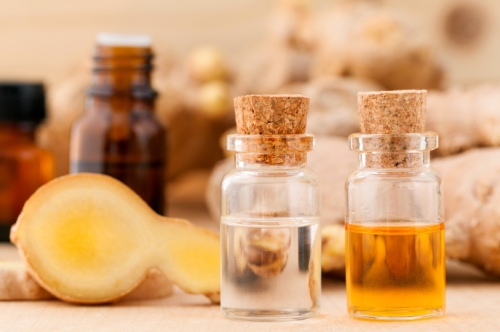Top Flavouring Agents for Bakery Products
Flavour is the heart of the baking business. It evokes a powerful emotional response in consumers and, while looks matter, it is secondary to aroma and taste. Flavour is an unforgettable hallmark of every purchase. Therefore, it is critical to include bakery flavours in the formulation stage while executing commercial banking operations.
Apart from tasting enhancers, flavouring agents are crucial to distinguishing product identity, ensuring stability over time as well as nurturing loyalty among devoted customers. The drastic change in demand such as new standards set by consumers seeking higher quality exotic clean label ingredients makes ever-changing consumer preferences more imperative than before. With every type of baked goods one can use flavours right that will mark the difference between a good baked item to a best seller on the market.
We now know how important it is now for us as a reliable B2B flavouring partner providing raw materials aimed toward delightfully indulgent done consistently on their own. We’ll walk you through the most popular flavouring agents used in baking, their types, applications, and sourcing tips for bulk requirements.
Why Flavour Is Important in Bakery Products?
Flavour unquestionably serves as an influential driver of consumer fulfilment. In the case of baked goods, flavour synergistically improves aroma, taste, and even aftertaste. The comforting aroma of vanilla in cupcakes or the indulgent chocolate found in brownies evoke emotions and memories that are cherished.
Signature flavours form an important identity for brands. With the use of distinct flavours, commercial bakeries are able to gain retention and recall from customers due to frequent purchase. Apart from this, most contemporary flavouring substances come with additional advantages such as being technologically advanced by having heat stability, long shelf-life, and ease in dissolution—making them greatly beneficial for mass production.
Types of Flavours for Baked Products
· Natural Flavouring Agents
Obtained from fruits, nuts, spices, and even dairy products, these extracts are wholesome and work well for clean-label products. Those seeking healthy options prefer their use as they resonate with health-conscious consumers. Rather well-known to the public is vanilla extract; citrus oils and spice distillates also fall under this category.
· Nature-Identical Flavours
These flavours stem from natural food sources but undergo a different process than Natural Extracts and are often more affordable. While still maintaining value in nature-identical quality, these creations tend to be cost-effective. Vanillin obtained from vanilla beans or ethyl butyrate used to provide fruity undertones serve best as common examples for such flavours.
· Artificial Flavouring Agents
More commonly known as synthetic alternatives, artificial flavouring has its upsides although it is highly preferred by some consumers. Like other modifications made in modern times towards confectionaries, sweet treats devoid of nutty essence still contain sugary goodness if machines are relied upon for their concoction which aids novelty baking has its positives along with enhanced effectiveness reliability while bought for a cheaper price
Top Flavouring Agents Used in Bakery Applications
· Vanilla Flavour
Most people appreciate the sweetness of vanilla noted in cakes, cookies, and various creams. It is often the base note that complements other flavours. It can be attained in pure extract, concentrated essence and even in powdered forms.
· Chocolate Flavour
Its taste revolves around brownies and muffins making it rather rich and indulgent. chocolate flavouring comes in cocoa-derived and synthetic formats which only add to its value.
· Butter & Cream Flavours
These help to enrich mouthfeel for cookies, pound cakes, made croissants among others as they increase the addition of cream with butter enabling one to alter richness.
· Fruit Flavours (Strawberry, Mango, Banana etc.)
Pastry is usually accompanied with vibrant fudge or a creamy filling to bring out tropical zest ranging from mango to tangy raspberry best paired boost seasonal or regional likings.
· Coffee & Caramel Flavours
Loaf cakes as well as layered desserts coupled with cupcakes become comfortable staples when garnished with these warm notes complimenting sweet but slightly heavy buttermilk coffee giving it an aromatic bite alongside Japanese pudding cup.
· Nut Based Flavours (Almond, Hazelnut, Pistachio)
An "olfactible" touch works well in biscuits by adding flavourful tart bases as well as almond along with hazelnut creating pistachio which is quite favorable and largely preferred by the consumers.
· Spices and Warm Hints (Cinnamon, Cardamom)
In addition to bringing heat, spices add a taste of culture to baked goods. Some of the warm notes we have come across are in cinnamon rolls, masala buns, and even spiced tea cakes.
Application Tips: How to Use Flavouring in Baking
- Mind Your Form: When it comes to bakery flavours, they can be put into liquid form, powdered version, paste, or encapsulated form. Choose what best suits your process whether it is baking filling or icing.
- Mind the Amount Used: Off putting notes might arise due to over flavouring so always adhere to the dosage instructions provided by your supplier. In this case the flavour supplier.
- Intelligent Pairing: Unique offerings can be created using complementary flavours like vanilla + almond or chocolate + orange.
- Heat Stability Test: If you are baking at elevated temperatures then make sure that your flavouring agent does not lose potency throughout the process.
Trends in Bakery Flavour Innovation
- Health Conscious Focused Flavours: To align with clean-label trends bid demand for low-sugar and natural flavouring solutions exists.
- Fusion Flavours: Rising in popularity is the incorporation of matcha with white chocolate or chai with vanilla; incorporating “global” tastes into treats.
- Customized Flavours : Tailor-made profile demands grow as B2B buyers look for pre-designed profiles aimed at niche segments but want them customized based on their needs.
- Plant-Based Alternatives: The vegan community, as well as people with allergies, are fuelling a rise in dairy-free and allergen-free flavours.
How To Source Bakery Flavours for B2B Needs?
When sourcing flavours for your bakery business:
- Collaborate With Trusted Suppliers: Select vendors whose history demonstrates reliability for food flavouring agents and compliance with regulations.
- Request Samples: Always evaluate taste, aroma, heat stability, and solubility.
- Check Certifications: Compliance with FSSAI, ISO, and other pertinent food safety compliance is essential.
- Explore Bulk & Custom Options: Discuss supply agreements for bulk purchase where custom formulation and volume pricing may provide added value.
Final Thoughts
Bakery flavours give identity to baked goods. Be it subtle vanilla or bold spices, each flavour adds value to the final product. Commercial bakeries can deliver memorable flavour experiences with consistent batch production through proper flavouring strategies alongside shifting consumer demands.
Success while seeking classic favourites or blends relies on selecting the appropriate flavour enhancers which makes partnership essential that offer scalable and high-quality tailored solutions needed to boost your product line.
Frequently Asked Questions
- What are bakery flavours?
- Bakery flavours refer to the aromas and fragrances that are used on pastries and other baked goods. They can be classified as natural, nature-identical, or artificial/flavouring substances.
- What is the difference between natural and artificial bakery flavours?
- Natural flavours differ from artificial ones because they originate from plant or animal cultures, whereas artificial flavours would be lab creations. Nature-identical flavours aim to imitate natural flavours, but these too are chemically produced.
- Which are the most popular flavours used in bakery products?
- Spices and fruits contain several of the world’s most consumed flavourings: vanilla, chocolate, butter, mangoes, and strawberries alongside cinnamon .
- Are bakery flavours heat-stable during baking?
- Most bakery flavours need to be heat-stabilized for best performance during baking which you should check with your supplier beforehand.












